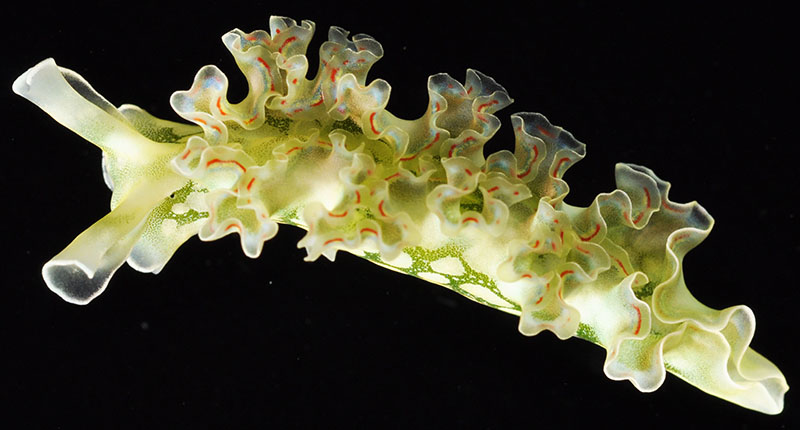Lettuce Sea Slug (Elysia crispata)

Photo provided by FLMNH Invertebrate Zoology
The lettuce sea slug (Elysia crispata) gets its green color from chloroplasts it steals from the algae it feeds on. Chloroplasts are the energy factories found in plant cells that convert the energy from sunlight into sugars that the plant uses to live and grow (photosynthesis). Elysia crispata, along with many other species in the order Sacoglossa, has the ability to absorb and retain chloroplasts from the algae it consumes which continue to photosynthesize providing nutrition to the slug. This ability is called kleptoplasty.
Although they resemble nudibranchs because they lack a shell, the group of sea slugs Elysia crispata belongs to are not closely related (they belong to different orders - Sacoglossa for Elysia and Nudibranchia for nudibranchs).
The lettuce sea slug is often green but also has a blue color form. E. crispata occurs in the tropic portions of the Atlantic Ocean and the Caribbean Sea and is usually associated near shore or with coral reefs.
The photograph above is of a specimen from the Florida Museum of Natural History Invertebrate Zoology Collection. This individual was collected from St. Martin in the French Antilles.
Want to see all of our Species' Spotlights and receive iDigBio related news? Subscribe to our newsletter, The iDigBio Spotlight!
Want to Learn More?
- View the specimen featured in this Biodiversity Spotlight or the 987 records of the genus Elysia in the iDigBio Portal
- Learn more about the genus Elysia from the World Register of Marine Species
- Learn more about Elysia crispata and other solar-powered sea slugs from the Sea Slug Forum







